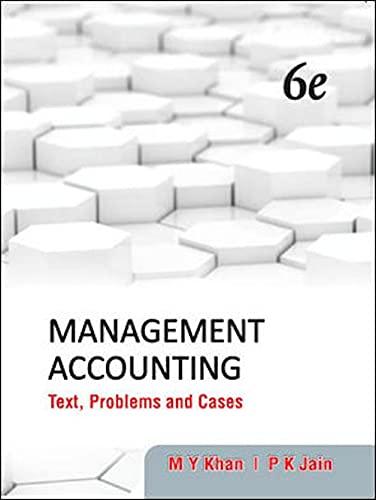Answered step by step
Verified Expert Solution
Question
1 Approved Answer
The Horn Company operates a simple chemical process to convert a single material into three separate items, referred to here as x , Y ,
The Horn Company operates a simple chemical process to convert a single material into three separate items, referred to here as and All three end
products are separated simultaneously at a single splitoff point.
iClick the icon for additional information.
During the selling prices of the items and the total amounts sold were as follows:
iClick the icon to view the sales information.
Read the requirements. YOU ONLY NEED TO DO REQUIREMENT PART A
a Start with the NRV cost allocation method. Begin by computing the net realizable value for total production at the point of splitoff and the weighting for each product. Enter the weights to two decimal places.
Net realizable value of total production at splitoff
Weighting
NRV method:
Joint costs allocated
Additional costs to process
Total productions costs
Determine the formula needed to compute the cost of goods sold using the NRV method.
Cost goods sold method
Compute the cost of goods sold for income statement purposes as of December using the NRV cost allocation method.
NRV method:
Cost of goods sold
Total
Determine the formula needed to compute the cost of ending inventory using the NRV method.
Ending inventory method
Compute the cost of inventories of and for balance sheet purposes as of December using the NRV cost allocation method.
NRV method:
Total
Requirements
Compute the cost of inventories of and for balance sheet purposes and the cost of goods
sold for income statement purposes as of December using the
following jointcostallocation methods:
a NRV Net realizable value method
b Constant grossmargin percentage NRV method
Compare the grossmargin percentages for and using the two methods given in
requirement
More info
tons sold for $ per ton
tons sold for $ per ton
tons sold for $ per ton
The total joint manufacturing costs for the year were $ Horn spent an
additional $ to finish product There were no beginning inventories of
or At the end of the year, the following inventories of completed units were
on hand: tons; tons; tons. There was no beginning or ending
work in process.
Products and are ready for sale immediately upon splitoff without further
processing or any other additional costs. Product however, is processed further
before being sold. There is no available market price for at the splitoff point. The
selling prices quoted here are expected to remain the same in the coming year.

Step by Step Solution
There are 3 Steps involved in it
Step: 1

Get Instant Access to Expert-Tailored Solutions
See step-by-step solutions with expert insights and AI powered tools for academic success
Step: 2

Step: 3

Ace Your Homework with AI
Get the answers you need in no time with our AI-driven, step-by-step assistance
Get Started


